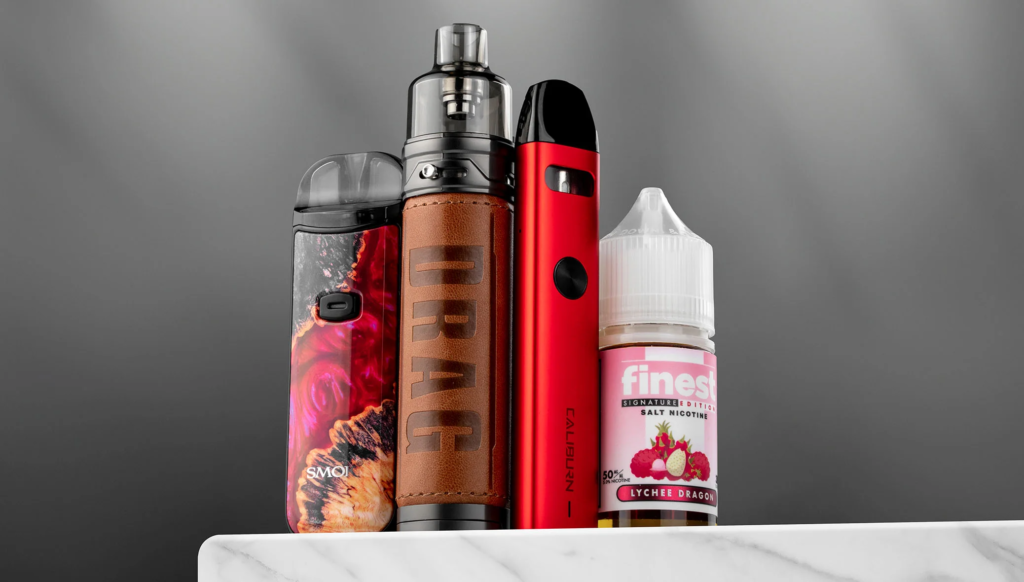The Evolution and Impact of Vaping: A comprehensive Overview
In recent years, vaping has emerged as a prominent trend in the landscape of tobacco and nicotine consumption, capturing the interest of both health professionals and casual users alike. This phenomenon, which began with the invention of the first electronic cigarette by Hon Lik in 2003, has rapidly evolved into a complex and multifaceted industry. Vaping devices, commonly known as e-cigarettes or vape pens, are battery-operated gadgets that vaporize a liquid solution, known as e-liquid or vape juice, which typically contains nicotine, flavorings, and other chemicals.

The appeal of vaping lies in its perceived benefits over traditional smoking, including reduced exposure to harmful tar and fewer carcinogens, leading many to view it as a safer alternative to combustible cigarettes. However, the rise of vaping has not been without controversy. Proponents argue that e-cigarettes can serve as an effective smoking cessation tool, offering smokers a less harmful way to satisfy their nicotine cravings and potentially reducing Vape Online their risk of smoking-related diseases.
Public health organizations have cautiously supported this view, acknowledging the potential of vaping to aid in smoking cessation while also urging further research to fully understand its long-term effects. On the other hand, critics raise concerns about the safety and efficacy of vaping products, pointing to the unknown long-term health consequences and the increasing popularity of flavored e-liquids among youth.
This has sparked a heated debate over the regulation and marketing of vaping products, as well as their role in public health strategies. The vaping industry has grown significantly over the past decade, with countless brands and products flooding the market. This rapid expansion has led to a diverse array of vaping devices, from basic cig-a-likes to advanced mod systems with customizable features.
The variety of e-liquids available also contributes to the allure of vaping, offering an extensive range of flavors from fruity to dessert-like options, which many users find appealing compared to the taste of traditional tobacco. As vaping continues to evolve, so does the technology behind it. Modern vape devices often feature sophisticated mechanisms such as temperature control, adjustable wattage, and enhanced airflow systems, which allow users to tailor their vaping experience to their preferences. Additionally, the development of nicotine salt e-liquids has revolutionized the market by providing a smoother and more satisfying nicotine hit, further enhancing the appeal of vaping.
Despite these advancements, the rise of vaping has been accompanied by increased scrutiny and regulation. Governments around the world have implemented various measures to control the sale and use of vaping products, with some countries instituting age restrictions, flavor bans, and packaging requirements. These regulations aim to address concerns about youth access and the potential for vaping to act as a gateway to smoking. In the united states, the food and Drug Administration (FDA) has taken steps to regulate e-cigarettes as tobacco products, imposing restrictions on marketing and sales while also requiring manufacturers to submit their products for review. This regulatory landscape reflects a broader effort to balance the potential benefits of vaping as a harm reduction tool with the need to safeguard public health, especially among young people.
The impact of vaping on public health remains a subject of ongoing research and debate. While some studies suggest that e-cigarettes may be less harmful than traditional cigarettes, others highlight potential risks associated with the inhalation of certain chemicals found in e-liquids. The long-term health effects of vaping are still largely unknown, and researchers continue to investigate the potential links between vaping and respiratory, cardiovascular, and other health issues. Furthermore, the rise of vaping has sparked a cultural shift, with the practice becoming increasingly integrated into social and recreational activities. Vape shops, online communities, and vaping conventions have emerged, creating a vibrant subculture centered around the enjoyment and exploration of vaping.
This cultural dimension adds another layer to the complex narrative of vaping, influencing perceptions and behaviors among users and non-users alike. In conclusion, the evolution of vaping represents a significant development in the realm of nicotine consumption and public health. While the technology and market for vaping products have advanced rapidly, ongoing research and regulation are crucial to fully understanding and addressing the potential risks and benefits associated with this trend. As the vaping landscape continues to evolve, it is essential for policymakers, researchers, and the public to remain informed and engaged in the dialogue surrounding this transformative phenomenon.